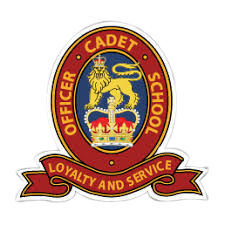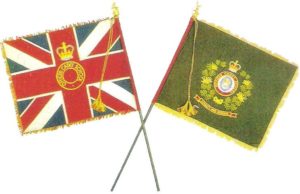
Since earliest times, warriors have carried standards or flags as a distinguishing mark and to serve as a rallying point during battle. To lose the standard often meant that the leader was lost and thus the standard became symbolic of the spirit and tradition of the group to which it belonged.
Arising from this ancient tradition units of today are allowed two Colours — The Queen’s Colour and the Regimental Colour. The Queen’s Colour is a reminder to all ranks of their loyalty and duty to their Sovereign and their Country. The Regimental Colour is a symbol of Regimental tradition and of the duty owed by each member of the Regiment. The Colours are highly valued, carefully guarded and treated with respect.
Until 1881 the Colours were taken to war and were carried at the head of each Regiment by young officers called Ensigns. History records many acts of bravery performed in order to prevent the Colours falling into the hands of the enemy. With the introduction of more modern weapons the casualty rate amongst Colour and Standard Bearers became so high that, since the Boer War, Colours have been retained in safe keeping when units have departed for active service.
Before being presented, the Colours are always consecrated at a religious ceremony on parade when God’s blessing of them is asked.
This dates back to the Battle of the Standard in 1138 when Yeomen of Yorkshire fighting the Scots, took with them consecrated banners from York Cathedral and fought so fiercely to save the banners that they defeated heavy odds.
When OCS had settled down to a more routine form of running and it was apparent that it was to be a permanent component of the army, commandants and staff had the leisure and incentive to acquire for the Company of Officer Cadets its fair share of the trappings appropriate to its status. An application was made to Army Headquarters in June 1960 for Queens and Regimental Colours for the Company of Officer Cadets. The application was favourably received and, gaining endorsement of the Military Board, the appropriate designs were prepared by the Master General of the Ordnance’s Branch and forwarded for royal approval. However such applications were then processed through the British War Office, where it was rejected on the basis that their Mons Officer Cadet School was equivalent to Portsea (which was not so, its function and course content was equivalent to that of Sandhurst), and as Mons had no colours, the application for Portsea must be rejected. It was a sad commentary on the lack of independence of the Australian Army, and also by implication national independence, that such an application for approval by the Head of State should be subject to ambush by the British army as if it was a superior headquarters, but such was the effective result.
The next attempt was initiated in 1967 when a changing climate in an Australian Army fighting for the first time outside the Imperial-Commonwealth umbrella provided more determined approach which resulted in British Ministry endorsement. The design of the colours was given royal approval, the Commonwealth Government Clothing Factory delivered the colours and they were presented by Prince Phillip as a Field Marshal of the Australian Army on 1 June 1968. Their design was the then standard Queens Colour of a Union Flag with the OCS motif in the centre, and the Regimental Colour an infantry green flag with the regimental badge, title and motto surrounded by wattle sprigs.
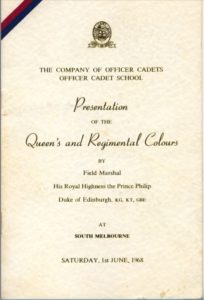
The presentation parade was held at the South Melbourne Cricket Ground. While the Portsea parade ground was both the most appropriate and picturesque, it was simply too cramped to handle a ceremony and spectacle of this magnitude, and as well enable the public to attend such a significant royal appearance; while allowing the cadets to bask in well-earned public acclaim. Fortunately at this stage it was possible to have an ecumenical blessing of the colours, in this case the Anglican chaplain consecrating, the Roman Catholic blessing and the Other Protestant Denominations dedicating. This was in stark contrast to the religious problems of the 1954 presentations at the Royal Military College and the Royal Australian Naval College. It was also a fortunate time of year, just before graduation, so that the junior class had had five months to perfect themselves, and the Company of Officer Cadets was able to put on the cameo performance which the occasion demanded.
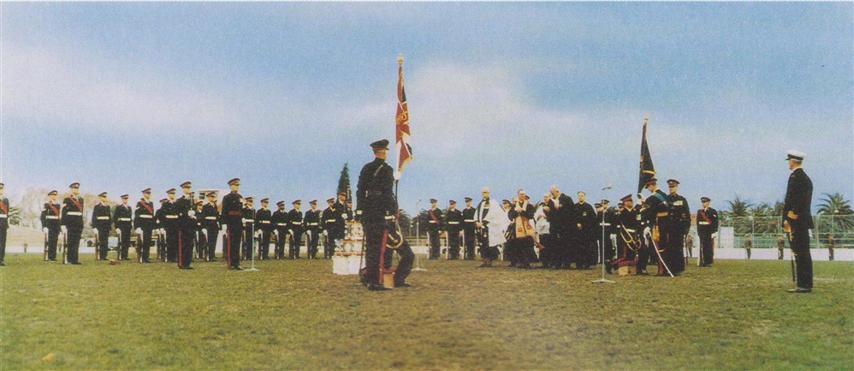
Presentation of Queen’s and Regimental Colours to the Company of Officer Cadets by Field Marshal Prince Phillip Duke of Edinburgh South Melbourne Cricket Ground 1 June 1968
Photo courtesy RMC Archives
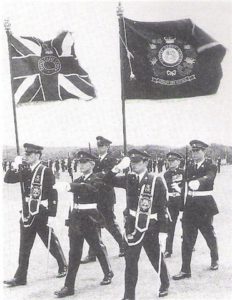
Graduation Parade December 1972
The Colours were the centre piece of subsequent ceremonial parades and guards of honour, and after their final outing at the last graduation at Portsea, there remained one further official duty to perform. The Army has long had a standard procedure for disposal of replaced colours or those of past units. The British practice was to lay them up in a church, suspended from the ceiling, where they remained until they disintegrated. This was perhaps a reasonable approach in an army which had seen such a wide variety and number of units over the centuries, and it was natural that the Australian Colonial and Commonwealth forces should follow suit. However, in an age conscious of its limited tradition, and one in which preservation techniques can stay the ravages of time, colours are now preserved in a controlled environment.
This was the more fortunate end for the OCS Colours. Farewelled on a ceremonial parade at RMC by the Corps of Staff Cadets on 23 March 1986, they were laid up in the RMC Chapel alongside RMC’s old colours. It was very fitting that the cadets on parade were led by those of the ungraduated class from OCS now completing their training at Duntroon: the spirit lived on.
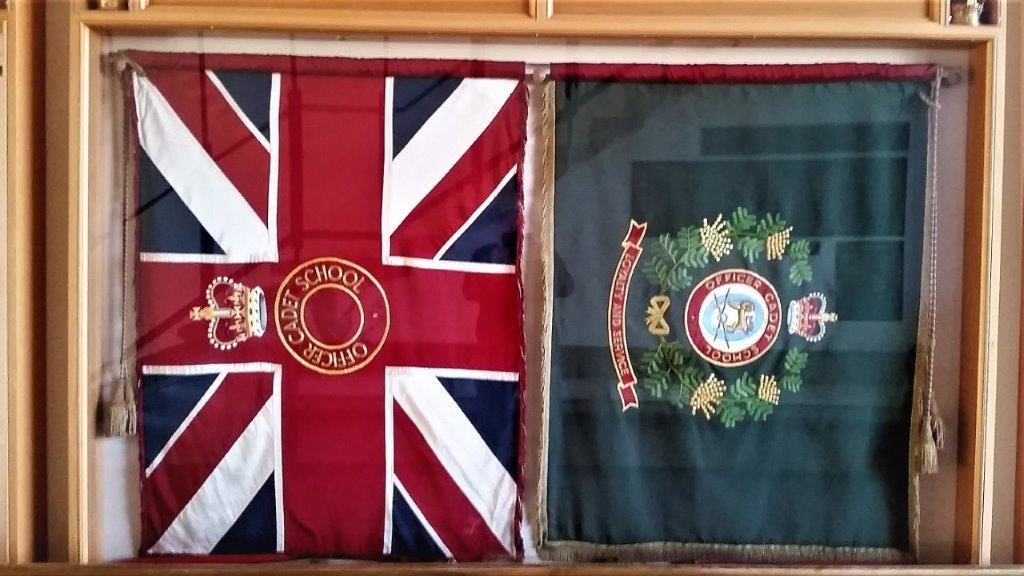
Information sourced from Loyalty and Service by Neville Lindsay and OCS Class Yearbooks.
